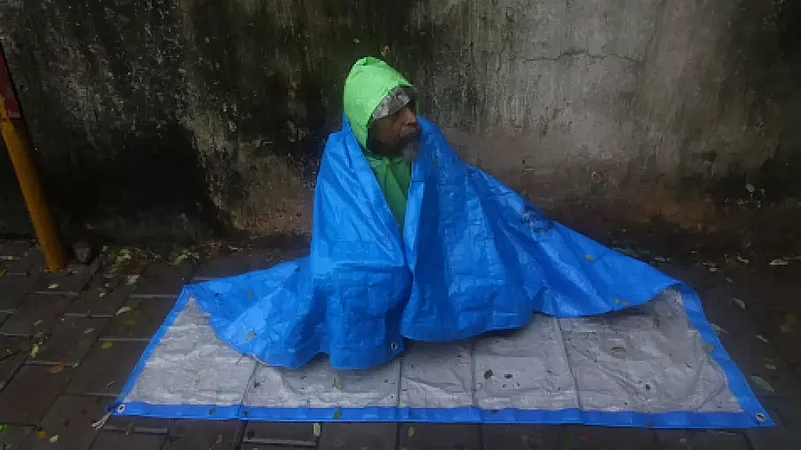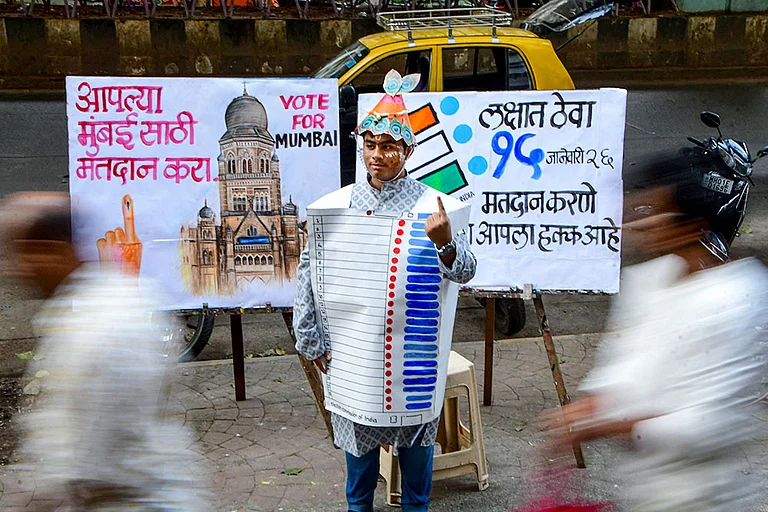When Nagpur was being beautified to be showcased as a developed modern city to the 250 delegates who attended the C-20 (Civil Society 20) India 2023 Inception Meeting of the G-20 Summit, the poor, under-privileged and the homeless living in and around Nagpur were displaced.
The Nagpur Police Commissioner Amitesh Kumar had issued a notification banning beggars from the city from March 9 to April 30. The said C-20 Meet was held from March 20-22. Any violator of this police notification under Section 144 of the CrPC (Criminal Procedure Code) was liable for a jail sentence ranging between one to six months. The said section prohibits individuals or groups from indulging in begging or forcing passers by to part with money at traffic junctions or any other public places. The C-20 is one of the eight official engagement groups of the G-20 forum.
Nagpur is the stronghold of BJP leader and Union minister Nitin Gadkari and Maharashtra deputy chief minister Devendra Fadnavis, who holds the Home portfolio in the government led by chief minister Eknath Shinde. To ensure that the rule was followed by the disadvantaged group who begged for a living, the Nagpur police and the Nagpur Municipal Corporation conducted joint patrolling of the city and shifted them to beggars’ homes, government shelters and other places of stay with the help of NGOs. The police commissioner had then told the media that such an operation was necessary to curb beggars as they had become a nuisance for motorists and pedestrians.
Out of the seven shelters for homeless people owned by the civic body, one is exclusively kept for beggars. The said home has a capacity to house 150 people and offers shelter to only males who are above 18 years of age. Women and children who are caught begging are sent to the shelter for women, with a capacity of 30 inmates.
NMC had also initiated action against streets hawkers and had moved them out to designated spots in the market place. Speaking to Outlook, Jammu Anand - vice president of the National Hawkers’ Federation said, “The police commissioner who wields so much power targeted the most vulnerable sections of the society. They are begging because they need to survive. Provide them with income then.” According to Anand, the C-20 event was used to make Nagpur free from the poor so that a “rich image” of the city could be showcased to the world.
Ratnakar J who has been actively working with the under-privileged classes castigated the civic body for their “inhuman” action against the poor. “It happens all the time. They are breaking up families. The women and children are sent to some place while the men are sent to some other place. You cannot break up their families because they are poor,” said Ratnakar to Outlook.
Narrating an incident of the civic staff destroying the goods and handcarts of hawkers, an angry Ratnakar felt that it would hurl the hawkers, who are daily wagers, into debt. “The handcart of a sugar cane vendor was smashed and thrown into a garbage dump by the civic staff. They also destroyed the entire sugarcane he had with him. Why? The poor man will lose his livelihood for some time. Will those who destroyed the sugarcane vendor’s handcart feed his family?” questioned Ratnakar.
The beautification exercise included painting of the city’s walls, hanging LED and halogen lights on trees and planting palm trees and saplings at all the roads leading to the venue and areas close to the venue of the C-20 inaugural session.
A vast collection of saplings running into hundreds, which had been purchased by the Nagpur Municipal Corporation, to beautify three roads – Airport Road, Wardha Road Telangkhedi Hanuman temple Futala Lake Road - leading to the C-20 venue wilted away and died. The civic body and the Maharashtra Public Works Department had purchased these saplings to do up the areas that were to be visited by the C-20 delegates.
Saplings which had been put up at the Traffic Park after being uprooted from the roads where they had been planted, too wilted away. Those in the know say that a large number of saplings had been abandoned at the landscapes abounding some of the roads.
The bright mustard coloured marigold saplings in full bloom had been put up on the dividers and in very large pots on these roads. According to sources, the saplings were crammed into the soil with their roots still inside the plastic bags. A source with the garden department of the civic body told Outlook that the saplings “were not planted into the soil, it was just kept there for the visual effect”.
Environment activists have also taken the civic body to task for hammering a lakh nails into 3000 trees located on the main road of Nagpur, to light up their branches and trucks for the C-20 inaugural event. These trees were lit up with various kinds of LED lights and halogen lamps.
Sources say that an estimated Rs 20 crore was spent on the light play on the trees on both sides of Airport road, Wardha road, VIP road from the airport T-point to Deekshabhoomi, Alankar Square to GPO Square and a few other roads. Tree activist Kunal Mourya had surveyed these trees to study the extent of the damage and had also counted the nails that were still in the trees.
The civic body had spent an estimated Rs 200 crore to beautify Nagpur for the C-20 conference.
Speaking to Outlook, environmental activist Anasuya Kale felt that showcasing a fake image of the city through short term beautification does not do anything for the common man. “It was a complete waste of time and the tax payers’ money. Nagpur does not get what the people want, it always gets what the politicians want,” said Kale.
Saying that all the ugliness of the city was hidden behind a beautified façade, Kale said, “It was like Nagpur ki shadi and Nagpurkars were the baratis. It was an event for the civil society and the same were not involved in whatever took place in the city. The event has left the civil society in Nagpur, angry.”


























